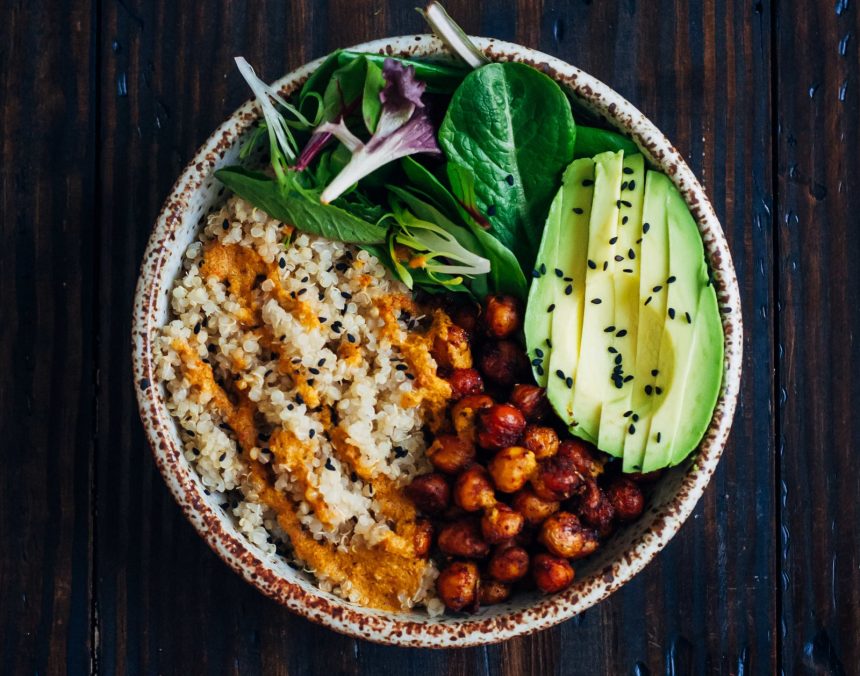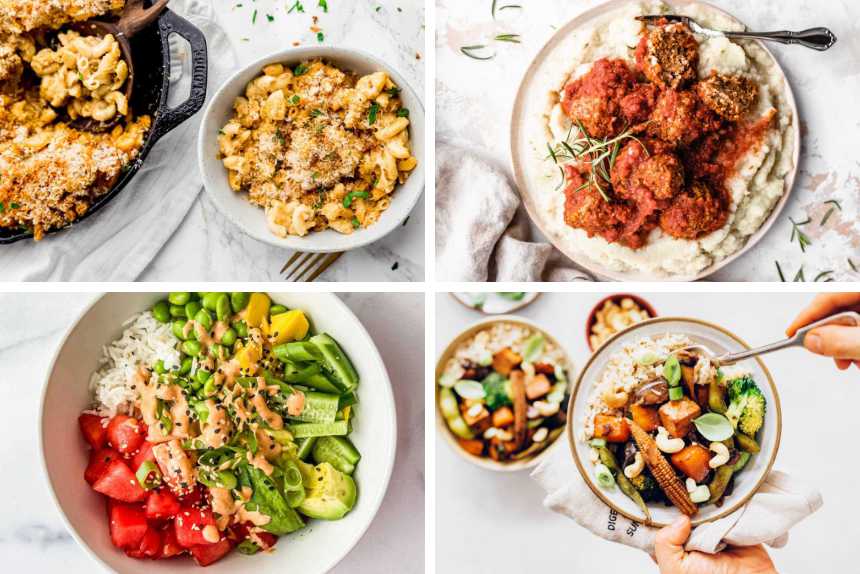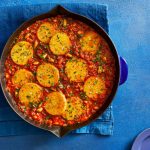New vegetarian? These vegan cooking tips for beginners will help you whip up delicious meals in no time.
Want to know how to cook vegetarian food? Preparing delicious vegan meals is not as difficult as with meat and cheese!
Even if you’ve never been a chef. But with a few basic vegan cooking tips for your kitchen, pantry, ingredients, and more, you can whip up delicious meals in no time.
Whether you’re on a budget or too busy to rely on food delivery nearly every day.
You can find a guide to vegetarian cooking here.
- How to cook vegetarian breakfast
- Cooking without oil
- How to make balls of happiness
- How to choose vegetables
Enjoy the following tips for beginners. For more information, check out our guide to being vegan.
Kitchen shares
If you want to learn how to cook vegetarian food, start by preparing different vegetarian dishes in your kitchen.
We recommend getting at least a few items from every major plant-based food group.
- Legume
- Fruit
- Vegetables
- Legume
- Walnuts
Don’t forget to enjoy your meal. Condiments such as ketchup and soy products in Main dishes such as bread and pasta.
For a complete list of what vegetarians eat, see the following articles: Food to eat at home How to tell if a product is vegan
Look for vegan alternatives
Replace animal foods in your diet with plant foods! Avoid the meat and cream, and don’t cut into the filling.
In terms of texture, protein-rich ingredients like TVP, beans, and tofu make for delicious vegetarian recipes and help you get enough plant-based protein!
Another easy substitute is soy milk instead of cow’s milk. Maple syrup instead of honey, olive oil instead of butter.
Check out our complete guide to Vegan Cooking Tips alternatives and healthy snack swaps!
Kitchen accessories
Let’s move on to the rest of the kitchen. Get the basic kitchen utensils to prepare many vegetarian dishes! More important:
- Non-stick pots or pans
- Container (small/medium/large)
- 2-3 sharp knives
- Chopping board
- with a silicone spatula
- Bowl (small, medium, large)
- wooden spoon
- potato peeler
- Grill
- Crockery (small/medium/large)
- mixer
If you want to make cooking and prep more fun, you’ll want to consider the following tools as well.
- High speed mixer
- Kitchen robot
- Steamer basket
- Pressure cooker
- The rice is boiling
We personally use our Instant Pot every day. And if it applies to your situation, it’s recommended!
Participate in food prep + planning
The hardest part of cooking is usually preparing the ingredients.
For example, washing and cutting vegetables can take up the most prep time, so washing and cutting excess vegetables can save you money in the future.
I like to have most of the ingredients in a recipe ready before I start. There’s nothing worse than waiting to cut a carrot when you’re actually going to fry it. This will overcook the zucchini and carrots.
If you want to learn more about meal prep and planning, check out the instructions below.
Organize your kitchen
It’s important to gather all or most of the ingredients you need before you start cooking and preparing. Check that all necessary equipment is clean and ready for use.
Turn on the oven or stove. Read all recipes before starting. And don’t forget to wash and chop the ingredients.
Prepare your measuring equipment and see if it is possible. Does “Always Clean” mean you can add ingredients used in recipes to see what’s left in your pots and pans?
Learn basic cooking techniques
These simple vegan meals and recipes allow you to prepare a variety of dishes.
Blender
A personal blender or stick blender can be used to make vegetable smoothies, sauces, soups, sauces or ice cream.
Application
It looks like a mixture, but it’s different! Use a food processor to make falafel, bean paste, edible cookie dough, and anything else you want smooth instead of wet.
Heating
With a stove and a pot, you can easily cook vegetables while preserving most of the nutrients. Enjoy broccoli, asparagus, green beans, sweet potatoes and more!
Cooking
Cook solid foods such as soups, noodles, noodles, and rice (cooked in hot water) until soft and edible. Do not use on vegetables!
Shake
Use a wok to sauté juicy vegetables or vegetable proteins in oil or water, stirring frequently with a spatula until they are a nice golden brown. Cook on medium-high heat, so the food cooks quickly and crisply.
Wok
Boiled, roasted or similarly grilled, but cooked over high heat with little oil or soy sauce. This method requires constant stirring of the vegetables (broccoli, peppers, zucchini, carrots, and asparagus are the most popular for this method).
Recipe
All vegetables will be delicious! Bake in the oven on high (400 °F+) until the natural sugars caramelize and the vegetables are fragrant!
Grill
Grill on a grill to make the food a little crispy. Try more than 35 cob rice, tempeh, tofu, mushroom, veggie burger or BBQ recipes.
Follow simple vegetarian recipes
Start with a very simple, basic recipe, especially if you don’t cook or eat vegan often.
Simplify your meals with proven ingredients and simple recipes. Start with mild spices. You can always add more.
Find a vegan cookbook for beginners, or check out these reviews.
Recreate old favorites
If you’re vegan, you don’t have to eat smoothies, quinoa salads, and other amazing foods! First, try making your favorite foods vegan.
Whether you use store-bought substitutes or make vegan oils and meats, you can enjoy delicious meals, as the following examples show.
Anyway, you can always Google “vegan” and you’ll find tons of ways to tweak that vegan diet.
Add sweet flavor
A misconception about vegan food is that it tastes great. This is only true if you can’t cook.
You can make your vegetables and herbs taste the same as your meat by adding herbs, spices and more!
After all, no one eats weird steak and shrimp, right?
Try the following flavors on your menu:
- Soy sauce: Not only does it add salt, but it also adds umami to the food.
- Mushroom: Has an earthy umami flavor when cooked.
- Garlic and Onion: Very common for strongly flavoring food.
- Nutritional yeast: Only vegans know about this food. It flavors cheese, enhances the taste of desserts and adds B vitamins.
- Added fat: From olive oil to nut butter or avocado, oils enhance the flavor and texture of foods.
- Salt: adds flavor to salty foods and enhances natural sweetness. Customize it to your liking!
- Vinegar or lemon juice: It is not only important for seasoning, but it can improve the taste of any food!
Another tip is to balance flavors by adding salt or lemon juice to savory recipes and sweetening desserts.

Use spices and seasonings
This feature deserves a special mention! A good sauce takes any dish to the next level and is a great vehicle for vegetables.
Make a cream soup or white broth with a thickener such as cornstarch. To avoid clumping, mix with cold water before heating.
Cashews, almonds, peanuts, tofu, and soy milk are our favorite ingredients for making various soups!
Don’t forget the humble hummus. Excellent as a dip, sandwich, wrap, or topping.











